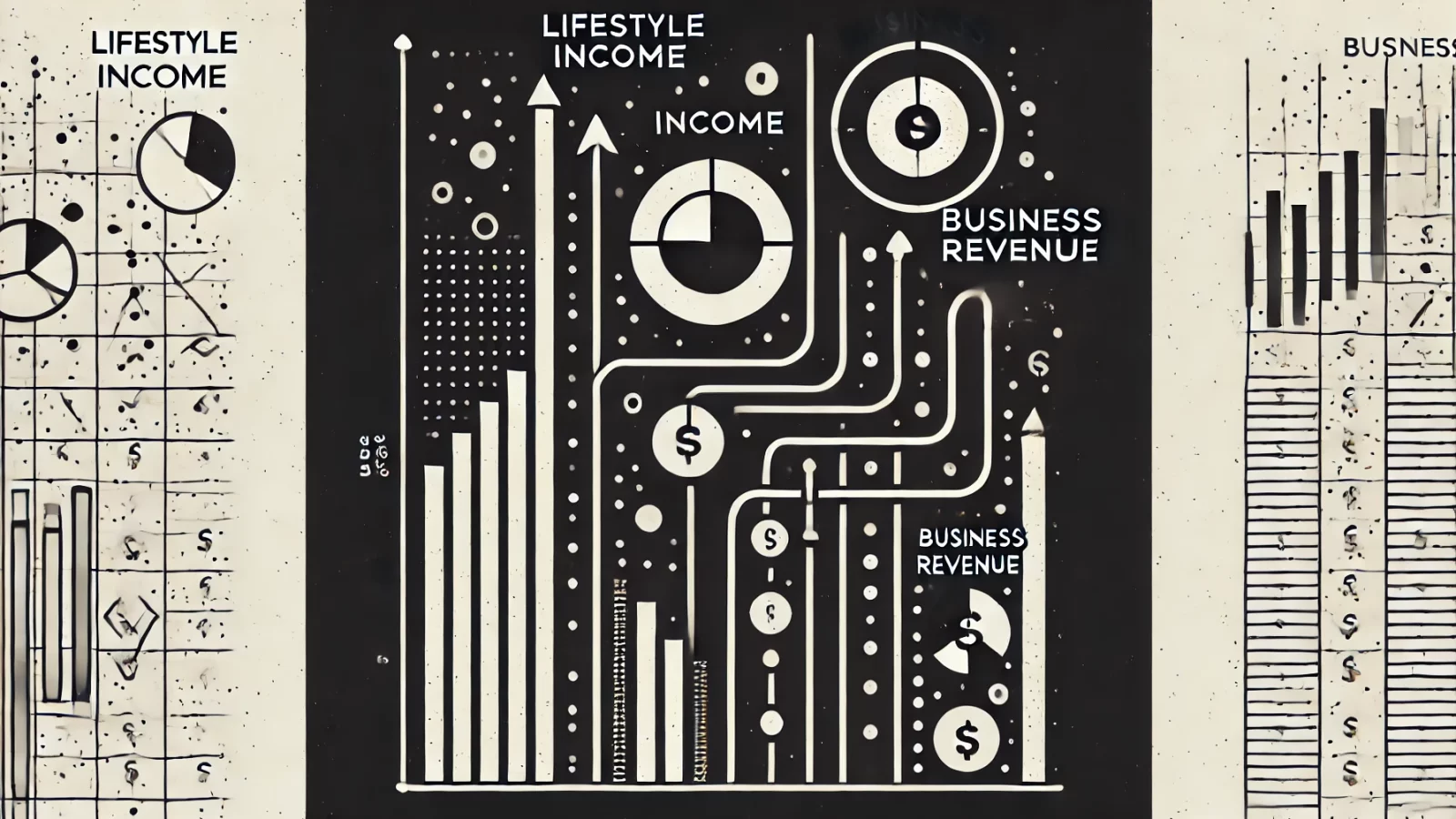Lifestyle Income vs. Business Revenue
Welcome back! Today, we're diving into an important concept that can reshape the way you think about your financial goals: the difference between lifestyle income and business revenue. To help illustrate this, I've put together a diagram and a couple of charts that compare basic income levels with the realities of financial planning.
Understanding Income Levels
Many people set their sights on a baseline income goal—just enough to cover their essential expenses. However, it's important to think bigger. As you aim for higher income goals, you can achieve financial stability, avoid tax troubles, and create opportunities for savings and investment, ultimately allowing you to retire within 15 to 20 years.
We could have a small baseline income goal that most people aim for, but as you increase your income goals, your sphere of influence expands. Achieving a higher income allows you to cover lifestyle costs, have some financial margin, and avoid tax issues. A solid personal income enables savings and investments that can lead to retirement within a reasonable timeframe.
Let's break down the different income levels:
- Baseline Income (~$60,000/year)
At this level, you're covering essentials like rent, food, and insurance. Many people try to save 10% of their income, which amounts to only $6,000 per year. This makes it difficult to build substantial savings or retire within a reasonable timeframe. - Trouble Level (~$120,000/year)
This income level can cover more expenses but often leads to financial strain due to lifestyle inflation—things like mortgages, car payments, and family expenses. At this stage, it's easy to fall into the trap of living paycheck to paycheck despite a higher salary. - Lifestyle Level (~$180,000/year)
At this point, discretionary spending increases, allowing for better housing, vacations, and luxury items. However, without strategic planning, the ability to save and invest may still be limited. - Contingency Level (~$250,000/year)
This income level provides room for financial flexibility, enabling investments in home upgrades and higher savings. With careful planning, individuals can make significant financial progress. - High-Income Earner (~$500,000/year)
Professionals such as executives, attorneys, and doctors can achieve financial independence by saving and investing strategically. Avoiding tax issues and maintaining disciplined financial habits are crucial at this stage. - Aggressive Investor (~$2 million/year)
At this level, substantial investments and strategic financial planning can lead to accelerated wealth accumulation. However, disciplined spending remains essential to avoid financial pitfalls.
The Importance of Scaling Business Revenue
To achieve higher income levels, scaling business revenue is crucial. A healthy business should aim for a profit margin of around 20%. For example, a business generating $10.8 million in revenue with a 20% profit margin results in $2.16 million in income.
Higher revenue allows businesses to reinvest in growth, hire employees, and expand their market presence while ensuring long-term financial stability. Businesses operating at different profit margins—whether 5%, 10%, or 20%—can still generate significant wealth when managed efficiently.
Planning for Financial Success
Baseline income levels often aren't enough to achieve financial independence. Whether you're a freelancer or a business owner, setting higher income goals and strategically managing revenue can put you on the fast track to financial security.
The charts and worksheets provided in this course allow you to adjust variables and explore different financial scenarios. By visualizing income growth and reinvesting profits, you can develop a clear roadmap for financial success.
Business Growth and Impact
Once your business reaches higher levels of revenue, you have the opportunity to make a broader impact. Whether it's hiring more staff, investing in better products, or supporting charitable causes, business revenue can be a tool for positive change. Operating at profit margins of 10% or even 5% can still result in substantial income, provided the business is structured efficiently.
Conclusion
Understanding the gap between lifestyle income and business revenue is essential to achieving your financial goals. Whether you're aiming to cover basic expenses or build a business with a lasting impact, strategic planning and goal setting are crucial.
Explore the provided resources, experiment with different financial strategies, and take control of your financial future. This is just the first step in refining your financial journey. Let's build a future that allows you to thrive, not just survive!








